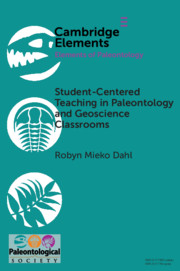Element contents
Student-Centered Teaching in Paleontology and Geoscience Classrooms
Published online by Cambridge University Press: 25 October 2018
Summary
Information
- Type
- Element
- Information
- Series: Elements of PaleontologyOnline ISBN: 9781108681483Publisher: Cambridge University PressPrint publication: 29 November 2018
References
Accessibility standard: Unknown
Why this information is here
This section outlines the accessibility features of this content - including support for screen readers, full keyboard navigation and high-contrast display options. This may not be relevant for you.Accessibility Information
- 20
- Cited by
